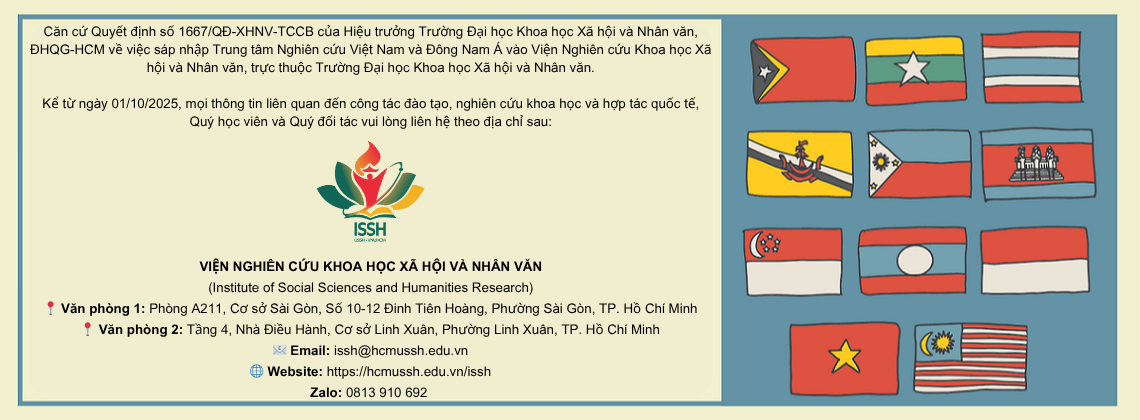CHINESE CHEQUERS IN SOUTH CHINA SEA
Thứ sáu, 18/07/2014 14:07China is trying to expand its territorial waters to the disadvantage of smaller countries close by, writes Pinak Ranjan Chakravarty
China is trying to expand its territorial waters to the disadvantage of smaller countries close by, writes Pinak Ranjan Chakravarty
 |
| A Chinese Coast Guard vessel passes near the Chinese oil rig, HY 981, in the South China Sea |
China’s top leadership hosted the president of Myanmar, U. Thein Sein, and the vice-president of India, Mohammad Hamid Ansari, at a ceremony marking the 60th anniversary of Panchsheel at the end of June in Beijing. In 1954, leaders of China, India and Myanmar (then Burma) agreed on the Five Principles of Peaceful Coexistence or Panchsheel — mutual respect for sovereignty and territorial integrity, mutual non-aggression, non-interference in one another’s internal affairs, equality and mutual benefit, and peaceful coexistence. Why has China expended political and diplomatic capital on Panchsheel, serenading India and Myanmar, both neighbours on its southern flank, with soothing words? The answer lies in developments in East Asia, where China is embroiled in serious disputes, pressing its claims of sovereignty over the vast expanse of the South China Sea.
While claiming the entire South China Sea, China rejects contesting claims from Brunei, Malaysia, Japan, Vietnam, the Philippines and Taiwan. The most recent spat between China and Vietnam was triggered by China in early May, when it sent a deep water oil drilling rig, Haiyang Shihua 981 (HY 981), with a price tag of a billion dollars, into the disputed waters off the Paracel Islands which China calls Xisha and Vietnam Hoang Sa. China seized these islands from South Vietnam in 1974, shortly before the end of the Vietnam war. The seas around the Paracel Islands are claimed by both China and Vietnam. In 2000, China and Vietnam agreed to a shared maritime border within the Gulf of Tonkin but till today have not been able to agree on a maritime boundary beyond the 2000 agreement, primarily because of the dispute over the Paracel Islands. China’s unilateral action stoked latent historical animosity and provoked Vietnamese mobs into going on the rampage. The mobs set fire to Chinese-owned industrial units, killed at least four Chinese workers, injured over a hundred and forced China to evacuate over 3000 of its citizens from Vietnam. China is Vietnam’s largest trading partner. China blamed Vietnam for obstructing routine exploration activity and scolded Vietnam for allowing riots against Chinese companies and attacks against Chinese citizens.
No oil has been struck in the area where China decided to place a huge oil rig that costs upwards of 320,000 dollars a day to maintain in situ. The Chinese State-owned oil and gas company, CNOOC, which dispatched this oil rig, may have been motivated by the prospect of finding oil and gas but it is highly unlikely that the decision to send the rig into disputed waters was motivated by this alone. China’s decision was for reasons of geo-politics and not just oil and gas. China was clearly aiming to stamp its claim of sovereignty and bolster its legal claim by establishing a physical fact on the ‘ground’ — in Chinese “blue territory” is the name for territorial waters. China has deployed hundreds of ships and aircraft to protect the oil rig. While no firing has broken out, Vietnam has released video footage showing Chinese ships ramming their ships and using high pressure water hoses to intimidate the Vietnamese. In these skirmishes, a Vietnamese fishing boat was rammed and sunk by a Chinese ship, though without any loss of life. The oil rig remains in place and Chinese technicians have started drilling, with Vietnamese ships and personnel closely watching the scene. The typhoon season will begin in a few months and by August-September the oil rig may have to be withdrawn.
But China has not relented and a new drilling rig, the Nanhai Jiuhao, has moved towards the first one and may end up near it, or keep heading southeast across the South China Sea for the Reed Bank, the most promising area for oil and gas, lying in the relatively shallow waters between the Philippines and the dozens of reefs and islets that constitute the Spratly Islands. Manila has authorized a Philippine company, Philex Petroleum, to begin test drilling in the Reed Bank in 2015. The deep waters off Vietnam, where HY 981 has been drilling and Exxon-Mobil has made some encouraging finds, are above the so-called Phu Khanh formation closer inshore near Vietnam. Phu Khanh is considered the second most promising place in the South China Sea to look for new sources of oil or gas. The positioning of the oil rig is China’s way of forcing the issue on development of off-shore resources, in the teeth of opposition from littoral states, including Vietnam. Even if China discovers oil and gas in commercially viable quantities, it is unclear how it will transport these resources to China if Vietnamese opposition continues, as it undoubtedly will.
The 10-member Association of South East Asian Nations, which includes Vietnam as a member-country, has expressed concern at China’s unilateral actions in the South China Sea since 1992. China has consistently attempted to create a cleavage within ASEAN thereafter. In 2012, China had successfully created a rift in ASEAN after it occupied Scarborough Shoal, lying well within the Philippines’s exclusive economic zone and the CNOOC announced a tender for oil exploration blocks again well within Vietnam’s EEZ. When the Philippines and Vietnam demanded a joint statement of solidarity and support, Cambodia vetoed the move, bowing to China’s economic clout and plain bribery. This time, however, ASEAN issued a special statement criticizing the events in the South China Sea. It is also pertinent that ASEAN’s secretary-general is now a Vietnamese national. Following this stand-off, China is unlikely to succeed in pressurizing ASEAN to agree to the Code of Conduct for the South China Sea (rules of engagement) that favours China.
Vietnam, in no position to confront China militarily, offered to discuss this issue and tried to persuade Beijing to open talks. China responded by laying down the condition that it would engage in talks if Vietnam acknowledged China's sovereignty over the waters where HY 981 and its flotilla of escort boats have been deployed. Finally, China sent an emissary, the state councillor, Yang Jiechi, a former foreign minister, to Hanoi for talks on June 18. Yang also chairs the annual meetings of the steering committee for Sino-Vietnamese Cooperation. He is also the same official who famously lost his composure at an ASEAN meeting some years back and reminded his counterparts that “China is a big country, and yours are small countries, and that’s a fact”.
China-Vietnam talks clearly made no headway and reached an impasse, as reflected in the tirades that erupted in their State-owned media. China’s Yang Jiechi warned Vietnam against disrupting the deployment of the oil rig and Vietnam’s prime minister, Nguyen Tan Dung, told China to withdraw the rig. Meanwhile, articles by Chinese and Vietnamese experts have challenged each country’s interpretation of a letter sent by the then prime minister of North Vietnam, Pham Van Dong, which the Chinese assert unilaterally recognized China’s claims. Expectedly, Vietnamese experts have disputed this interpretation. The dispute shows every sign of lingering.
Vietnam, caught by surprise by China’s latest action, is now making common cause with the Philippines and considering legal action against China, either independently or by joining the Philippines in its complaint already filed at The Hague International Tribunal. This will surely further antagonize China which has insisted on bilateral negotiations to sort out differences with individual countries — classic Salami tactics. The Vietnamese prime minister, Nguyen Tan Dung, has gone on record saying that the Philippines and Vietnam were “determined to oppose China’s violations and call on countries and the international community to continue strongly condemning China and demanding China to immediately end the above said violations”. Dung again criticized China at the World Economic Forum on East Asia in Manila. He warned that an armed conflict in the South China Sea, where a large share of the world’s shipping passes, could be so debilitating “it may even reverse the trend of global economic recovery”. Dung also said that “the action by China has been directly threatening peace, stability and maritime security and safety and freedom of navigation and aviation in the East Sea”, using Vietnam’s name for the South China Sea.
This latest stand-off has led to the United States of America accusing China of “provocative actions”. The US vice-president, Joe Biden, conveyed American objections in person to Fang Fenghui, general chief of staff of China’s military. India has also expressed its concern at this new spat and stressed the need for maintaining freedom of navigation in these disputed waters. Both the US and India have not taken sides on the merits of the disputed claims. China’s response has been more bluster about rest of the world having no business what China does in its sovereign domain, thereby conveying that China’s actions were inside its territorial sea.
Why did China decide to provoke Vietnam at this juncture and risk rupturing reasonably stable relations with a fellow communist country? It would seem that it was a calculated gambit to stamp its claim of sovereignty over the South China Sea and test the resolve of Vietnam and ASEAN and also to test international reaction. Vietnam was maintaining a low-key approach towards China. Nor did Vietnam do anything to provoke China in any way. Vietnam had kept quiet when the Philippines took its dispute to the International Tribunal at The Hague last year. China’s aggressive foray is in stark contrast to the recent signing of an agreement between Indonesia and the Philippines, resolving their maritime border after 20 years of negotiations. In a barely disguised swipe at China, the president of the Philippines, Benigno Aquino, called the agreement a milestone “that is founded on the principles of international law, particularly the United Nations Convention on the Law of the Sea… it serves as solid proof to our steadfast commitment to uphold the rule of law and pursue the peaceful and equitable settlement of maritime concerns”.
China’s upping the ante can be traced to its assertiveness in legalizing its claim over the South China Sea to feed its burgeoning appetite for natural resources, particularly oil and gas, as its economy expands. The timing of the incident was also chosen carefully, after the recent visit of the US president, Barack Obama, to Asia as a part of the “pivot towards Asia” or “rebalancing”. The US has treaty-based alliances with Japan and the Philippines and these security bonds were reiterated during the visit. Vietnam has no such relationship and China chose to test Vietnam rather than the treaty partners of the US. The incident also reinforced China’s assumption that the US will remain largely neutral on disputed claims and insist only freedom of navigation and will remain aloof if Vietnam is bullied. International perception is inexorably drifting away from the earlier “peaceful rise of China” and coalescing around the view that China is becoming more assertive and aggressive on disputes with countries on its periphery. This is bound to create misgivings in the Indo-Pacific region and force realignments to counter China’s aggressive and dangerous brinkmanship in which a stray miscalculation could explode into a shooting conflict. The search for a stable security architecture in Asia has a long and difficult road ahead.














